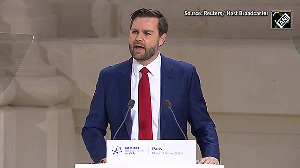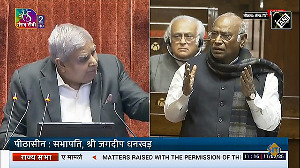July 22, 2008 -- a day which made history -- the survival of the Manmohan Singh government, the stock market upsurge -- the decline in oil prices was an opportune coincidence to signal happy days ahead for India Inc -- with the acceleration of the reform process halted by the Left parties, particularly the financial bills.
The main areas of contention have been the Pension Fund Regulatory and Development Authority Act and the various banking reforms.
The PFRDA seeks to establish and regulate a New Pension System and Structure to provide old age income security. The current system covers only the organised sector and government, has limited portability, and is restricted to making investments only in specified government securities, but guarantees returns.
If this system is indeed perfect, then the Employees Provident Fund, the current statutory regulator would not be in deficit, having to fork out interest substantially higher than market rates in a low return market, with a set investment pattern in government securities and PSU bonds.
Historically, EPFO with its strong trade union dominated governance structure and inability to migrate to a more progressive regime, left the government with no choice other than considering alternative structures.
The pluses include defined guaranteed benefit linked to pay drawn, years of service, and for government employees, no contribution or direct risk -- other than delays, in the current deficit situation, in which case the risk is that of the government.
The NPS envisages a proportion of his monthly income in an individual account. Employees can choose their investment options from a basket with varying risks -- mutual funds, shares and other market securities.
On exit, part of the accumulation is used to buy an annuity, and the balance paid to the employee. Needless to say, the entire investment risk is of the employee.
One can see where the objections flow from -- the migration from a 100 per cent comfort zone to an option that may fetch higher returns -- the loss of governmental protection to one which has a higher yield potential. What is the rationale for compromising the secured rights of an ageing population and permitting the private sector, particularly foreign players to dabble in equities of the "sweat funds" of the common man.
The Left parties' demands of 100 per cent funds being invested in government securities, an unrealistic guaranteed return, deployment of public sector employees as fund managers, refusal to shift to a defined contribution system and of course the standard opposition to FDI of 26 per cent do not offer any constructive solution.
What is missed out is who is identified as the common man, and also the empirical evidence on returns on equity and how they have benefited the common man.
Is the common man adequately covered under the current regime? Currently, the EPFO under its various schemes including the Public Provident Fund, which is accessible to all, provides coverage to a minuscule section of the total workforce -- approximately 90 per cent do not have coverage.
With the withdrawal of the support structure of the joint family, which was taken for granted, and the delays/defaults by the EPFO, this problem was addressed effectively only in 2002-03, with an interim PFRDA establish and the NPS making a tentative start through the executive route, hedged in by the extant government restrictions on low-risk low-return investments.
An ordinance initiated in 2004 failed to take off, and since 2005 the PFRDA Bill has been languishing in Parliament, while the greater good for the greater number has been put on the back burner. Some measures such as law of maintenance of parents by children were enacted -- which is no substitute for organised institutional mechanisms.
Any complex reform proposal impacting human sensitivities is bound to face populist cynicism. But the case of PFRDA and the NPS faced opposition within and without -- resistance from the EPFO and veto from the Left. Certainly, the tail has wagged the dog to a paralytic state.
On balance, what is critical is to have a structure that works -- regulators, intermediaries, etc. and transparency in asset management. And most important not lose track that the purpose of investment is to meet old age needs, when all other yields are extinguished.
Kumkum Sen is a Partner in Rajinder Narain & Co. and can be reached at kumkumsen@rnclegal.com







 © 2025
© 2025